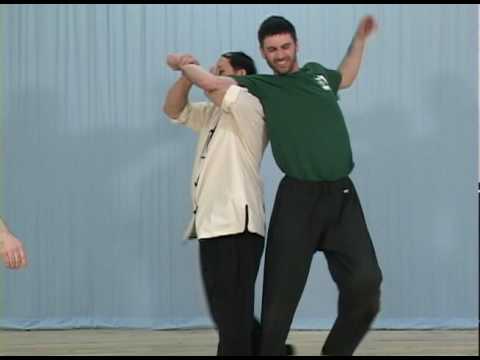[quote]Sifu wrote:
[quote]farmermaggot wrote:
[quote]admbaum wrote:
Kata’s, I think, are like shadow boxing. Its all about developing muscle memory. Most people think they can throw a jab, but when the actually do it they are completely off and will probably never actually land one. Shadow boxing helps develop your muscle memory similar to kata’s. I trained a little karate at a McDojo many years ago and didnt gain much from it. [/quote]
Allow me to be more specific. In a Kempo kata, you step, you stop, then punch. You step again, slight pause, then punch. There seems to be a disconnect between what the lower body does and what the arms are doing. Blocking and striking are done with the arms, while the body is stable, but stationary. From what I’ve been able to see online, this is fairly typical with karate. This seems to lack the total body dynamic that boxing and MT have. And it only makes me doubt this system more when I see its practitioners never use it during sparring.
Since I’m basically an inexperienced maggot in the martial arts world I’m hoping to see a discussion from those of you who aren’t maggots. Are traditional striking arts that use kata just kickboxing in disguise with a lot of posturing added on to make it look exotic? [/quote]
Forms should have a flow to them. They should not have a start, stop, start, stop, mechanical quality to them. From what I have seen of Kempo in particular they really like to flow their techniques rapid fire.
There actually needs to be a precise timing to your stepping and striking so that your movement from stance to stance is part of your power generation. So your lower and upper body should have a co-ordination to them, though it may not be one that you are familiar with.
Striking in martial arts is different from boxing because in martial arts there are other factors you have to take into consideration that boxers don’t have to think about. For example, boxers can put a full body commitment into a punch that can put them in an imbalanced position because they don’t have to worry about their opponent grappling them and using their imbalance to get them down for some ground and pound. Another thing is punches aren’t your only or deadliest technique.
[/quote]
I would disagree that boxers are ever taught to commit to punches to the point of putting themselves in unbalanced positions. Balance and proper body positioning are actually heavily emphasized in boxing. But I would agree that the striking does differ.
In boxing people are generally taught the mindset of conserving energy and feeling out their opponent. For them this makes perfect sense, since boxing matches are several rounds long and the boxer knows that they need to save enough in the tank to be able to potentially last all of the rounds.
This is in stark contrast to real fighting, which are usually usually made up of a burst/flurry of energy and tend to end rather quickly.
This is true, although different boxing coaches teach slightly more or less squared body positioning. The leg kick thing is definitely not taken into consideration though.
Absolutely.
The only thing is that you can’t really learn effective grappling skills (chin na or otherwise) from a kata. You’ve got to train them on another person and actually feel the slight adjustments that must be made to get them right. I’d prefer things like flow drills or even just pure technical practice on a partner over katas for such skills. I guess that once you already had the skills you could practice stuff in the air, but I don’t think it’s really all that great a method.
Also, one of my training partners has trained with Yang Jwing-Ming in Chin Na and liked what he taught. This individual is also a black belt under Wally Jay in Small Circle Jujitsu and has some nasty locking skills.


